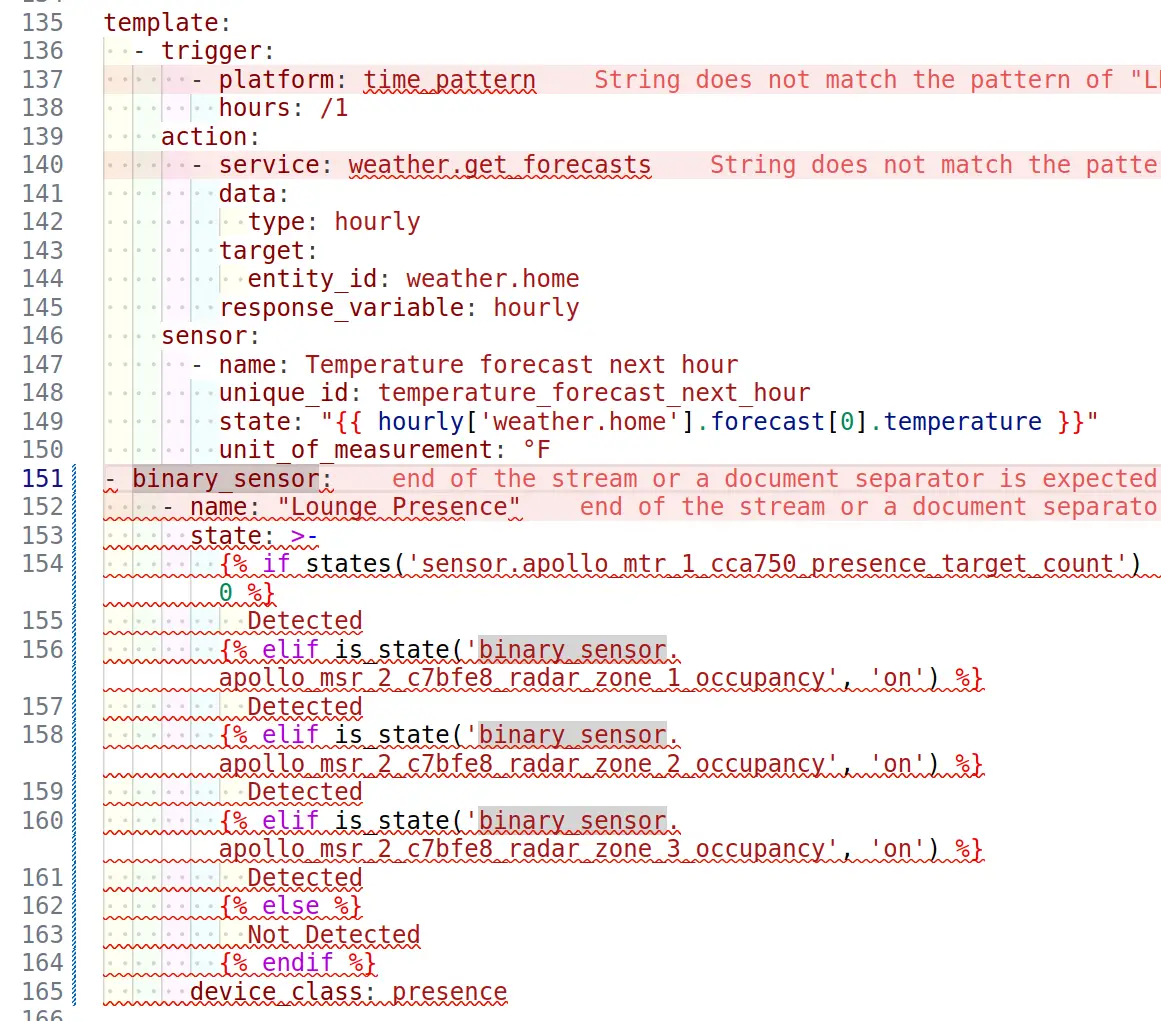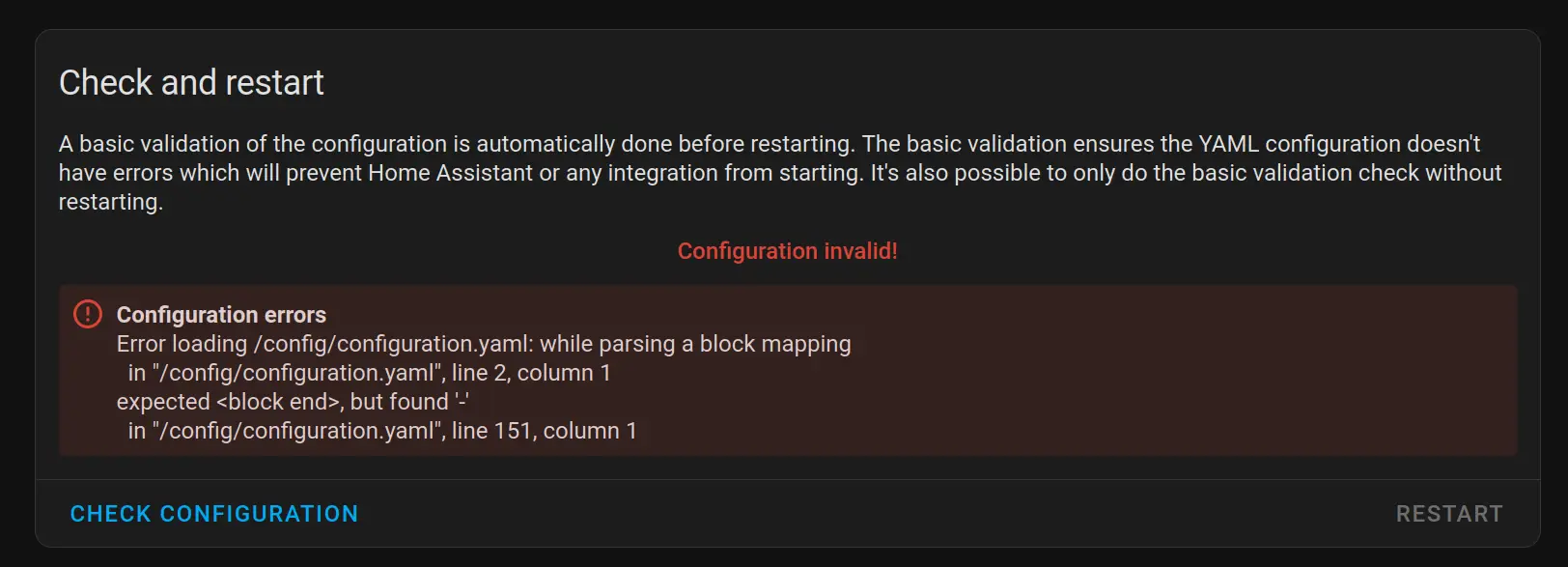I think Studio Code Server is a linter. It's telling me what the syntax problems are - I just don't know how to fix them. Now that I removed the hypehn, it's not telling me there are any spacing/formatting issues. But it currently says I'm missing the "entities" and "platform" properties, but I don't know what the values should be. And It also says "state" is not an allowed property, but that's the property that holds all the important stuff about this sensor - so how can I remove it?
mike_wooskey
What I did was de-indent the binary_sensor section so it was at the same heirarchy as the template section, like this:

But I realize now that I have to remove the hypen before "binary_sensor". When I do, I Studio Code Server still shows a couple errors:

It says I'm missing the "entities" and "platform" properties, and that "state" is not an allowed property.
Thanks for the suggsetion @Matt The Horwood.
It looks like a "Combine the state of several sensors" or a "Group" helper only allow you to combine sensors of the same type.
I created a binary sensor from a template using the helper, but it also returns "'binary_sensor' is undefined" when I try to access its value in the template editor with {{ states(binary_sensor.lounge_presence) }}
If any of these 4 things happen, set the sensor to "Detected", otherwise set it to "Not Detected":
- MTR presence target count is greater than 0 (zero)
- MSR zone 1 occupancy is "on"
- MSR zone 2 occupancy is "on"
- MSR zone 3 occupancy is "on"
As I said, this is working correctly in the template editor. The problem is that I can't make a sensor out of it.
Thanks for the suggestion, @NeoNachtwaechter.
But doing that makes configuration.yaml invalid:

~/git/vendor/<gitUser>/<repo>
and
~/git/<myName>/<forge>/<user>/<repo>
Examples:
~/git/vendor/EnigmaCurry/d.rymcg.tech
~/git/mike/forgejo/mikew/myproject
~/git/mike/github/johndoe/otherProject
I should add the d.rymcg.tech includes step-ca if you want to host your own CA server, but I agree with @[email protected] : it's not necessary for securely hosting services, and ir can be dangerous I'd not done carefully.
I have a similar setup. I use d.rymcg.tech (a configuration manager for Docker, as well as a collection of open source web services and config templates) and have Traefik (reverse proxy) on a Digital Ocean dropet connected to a VM in my home lab through wireguard. This framework allows me to put authentication and authoriation in front of any apps/services I'm hosting (HTTP basic auth, oauth2, mTLS). This setup allows me to control what is allowed access from outside of my home, without opening any ports.
I self-host forgejo. I'm not a heavy or advanced user, and it suits my needs. I barely use github any more: mainly to star repos I like, and find and use repos (there's a ton there - it's almost ubiquitous).
I self-host xBrowserSync. It's a bookmark sync tool, not a link manager, but it does that very well (set-and-forget - it's almost invisible). There are browser extensions and mobile apps
I've also used Shaarli, which is more of a link sharing tool. Don't remember much about it, though - sorry.
Thanks for sharing about Backrest. I use Restic and Backrest looks like a great addition to it.